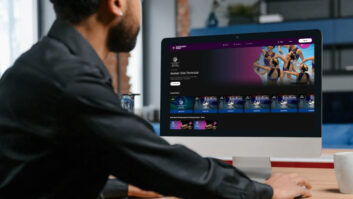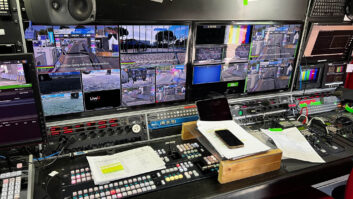After a bumper year of sports in 2018, where highlights included England’s nail-biting progression through the football World Cup and Europe’s Ryder Cup dominance, and with no Olympics in sight for another year, expectations for 2019 were subdued at best.
And yet 2019 has surpassed all expectations and paid testament to the continued strength of linear TV, the increasing influence of digital disruptors, and the power of new players on the field.
So, what have broadcasters done to drive and take advantage of the continuing consumer demand for sports coverage, and what have been the key trends we’ve seen to date?
Raised to royal status
Several developments have underscored the ongoing relevance of linear in sports broadcasting this year. 11.7 million of us watched the highs and lows of England in the Women’s World Cup, whilst 4.5 million tuned into the international cricket final as it returned to free-to-air television for the first time in 14 years. Meanwhile, both Wimbledon and the Grand Prix competed for viewers’ attention during a packed free-to air schedule.
What all of this goes to show is that linear broadcasting is unlikely to loosen its grip on the sports industry any time soon, and in fact, with the addition of the Paralympics to the ‘crown-jewel’ free-to air channels, linear looks set to draw even bigger audiences next year. While positive, this will bring its own challenges, and as the sporting calendar gets more crowded, broadcasters will need to experiment with how best to capture viewers’ divided attention.
Streaming now: live sports
Although viewers are consuming more media than ever, we can see fragmented engagement patterns across devices, platforms and content services. Audience demand for 24/7 content availability forces broadcasters to adapt delivery models so rights holders can follow and grow their audiences, whilst the two-way nature of social video has created opportunities for viewers to engage with content more actively.
Once the preserve of well-funded broadcasters, big tech companies are taking advantage of digital disruption to introduce competing platforms. Within the last year, Amazon secured the ATP World Tour Tennis and Premier League rights, while Facebook won La Liga rights for India. Meanwhile, live streaming has become a permanent fixture in schedules – just look at the Sky Sports YouTube channel, which streamed the Premier League Highlights and Netball World Cup this year. And it’s not just major sports that are benefitting from digital services; since opting to stream live races through YouTube, Henley has seen a growth in entries and audience interest.
Entering this space requires speed, flexibility and agility for players to experiment with new ways to deliver content cost-effectively, and to find traction in a shifting media landscape. Cloud-based platforms, such as Amazon Web Services (AWS), centralise how broadcasters transform, process, deliver and acquire content. As digital viewing continues to rise, broadcasters will increasingly look to the Cloud to deliver content across multiple platforms and grow their audiences.
The esports opportunity
In the face of intensifying competition from alternative formats, traditional sports can’t afford to ignore digital services that support immersive, interactive and intensely social entertainment.
As the fastest growing sport globally, both in terms of monetisation and audiences, it’s no surprise that esports has captured the attention of rights holders and broadcasters seeking to expand their audiences. The esports global market is expected to break $1 billion next year – 21 per cent of which currently comes from rights media. Meanwhile, esports global audiences are expected to almost double to 800 million by 2023, and will be boosted by the 2024 Paris Olympics, where it will be a demonstration sport.
Without the legacy challenges of traditional linear TV – namely, the challenges of latency and bandwidth and building on OTT – esports can build quickly to a massive scale. Esports is a natural addition to any programme line-ups that include short-form video content – something we are seeing more frequently as broadcasters try to meet the growing demand for online content. Current dominant broadcast media players are following audiences and investing to acquire a market share in esports; Amazon-owned Twitch network paid $90 million for Overwatch, one of the main franchise leagues.
To drive esports viewership among mainstream audiences in the coming year(s), broadcasters will have to shift their focus onto shorter games, which will be more compatible with the time constraints of TV, and partner with traditional sports organisations to tap into the popularity of high-profile games.
One thing is clear: sports media consumption isn’t set to slow down anytime soon. With both the Rugby World Cup and 2020 Olympics on the horizon in Japan, we can expect broadcasters to experiment with different services and ways to deliver content, to engage with existing customers and reach untapped new audiences.







